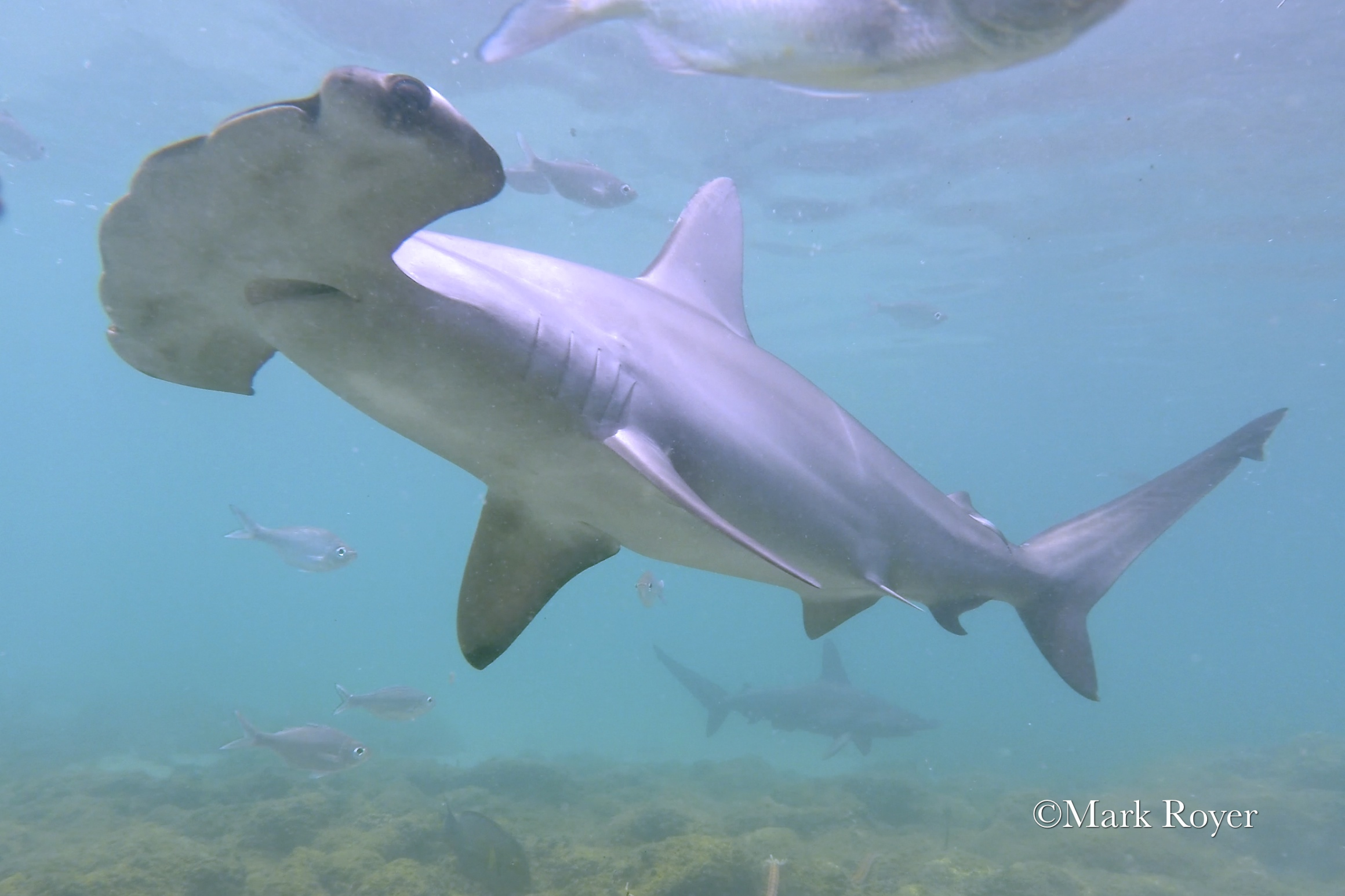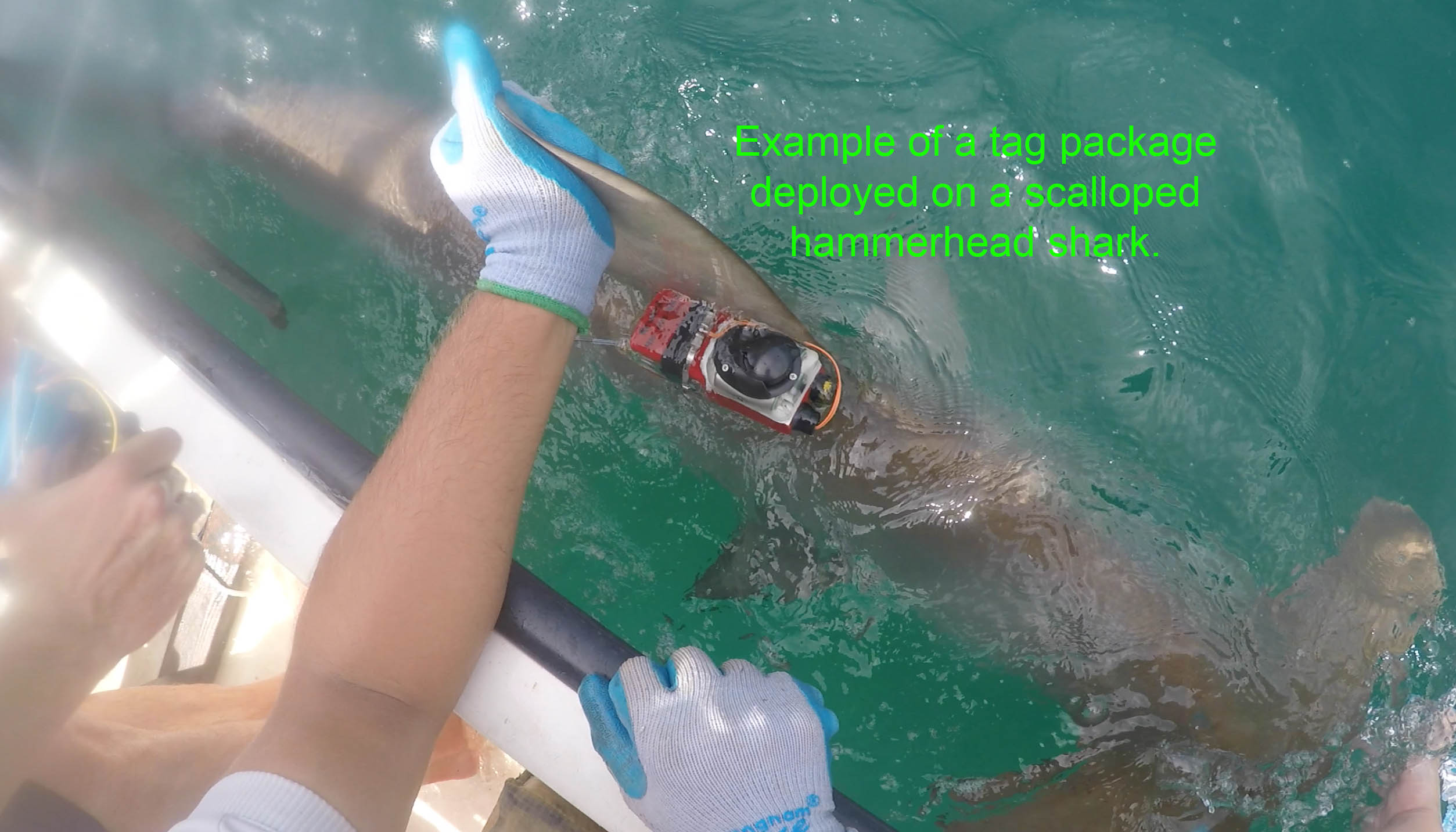Sharkbites Saturday is thrilled to feature a guest post by Mark Royer, a Ph.D. Student from the Shark and Reef Fish Research Lab at Hawai’i Institute of Marine Biology, led by Carl Meyer and Kim Holland, two of the most distinguished shark scientists in the world. Mark shared his current PhD dissertation research with us, along with some of the amazing photos he takes in the field.
Temperature is one of the most important environmental factors that drives the behavior and performance of marine animals. Climate change is altering the distribution of thermal environments across latitudes and depths. These changes have the potential of altering the behavior and distribution of marine animals including large predators such as sharks. The goal of my thesis research is to gain an understanding of how sharks function and respond physiologically to extreme temperature changes during their routine vertical movements from warm surface waters to cold depths.

How does an endangered, tropical shark survive arctic water temperatures?
Scalloped hammerhead sharks (Sphyrna lewini) occupy warm surface waters in tropical environments. Beach goers, divers and anglers might get a lucky chance of seeing a scalloped hammerhead swimming close to shore. Our electronic tagging studies in Hawaii reveal that these animals make repeated nocturnal dives to depths exceeding 1250m where water temperatures are as low as 3°C. The permanent inhabitants (e.g. fishes, squids) of these deep, cold habitats are sluggish and slow-swimming compared to their surface counterparts, suggesting that ease of prey capture likely motivates the deep-diving behavior seen in scalloped hammerhead sharks. However, there is also heavy risk associated with this deep-diving behavior – if swimming muscles become too cold, then they will lose muscle power and this could ultimately result in death, as hammerhead sharks must swim to maintain oxygen delivery to their gills.
We know that a small number of shark species, such as the great white, mako and common thresher shark, are effectively warm-blooded and thus able to exploit cold-water habitats by actively maintaining warm core body temperatures. However, most shark species are thought to lack the anatomical and physiological adaptations that allow white sharks and their close relatives to be warm blooded. In other words, most sharks are considered to be cold-blooded (ectothermic). So how does an ectothermic species such as the scalloped hammerhead survive frigid water temperatures experienced during deep dives? It is possible that they have an undiscovered physiological or anatomical adaptation that enable them to maintain a warm body core, or they may rely exclusively on thermal inertia to carry them through their deep dives. In the latter case, the sheer physical size of the shark insulates the body core and provides a short window of opportunity for them to exploit deep, cold habitats before they must return to the surface waters to rewarm. The key to answering this question is to directly measure the muscle temperatures and swimming performance in free-ranging scalloped hammerhead sharks as they cycle through their nocturnal deep dives.

What Makes a Hammerhead Tick?
To understand how scalloped hammerheads can function in cold depths, I use multi-instrument packages that simultaneously measure internal muscle temperature, swimming performance (tail beat frequency and amplitude), swimming speed, body orientation, swimming depth and ambient temperature. After a predetermined period of time, these instrument packages automatically detach from the shark and float to the surface where they are recovered and downloaded. These tag packages gather high resolution data on the sharks swimming performance by measuring the amplitude of their body movement and orientation, similar to how a smartphones or a Fitbit bracelets keeps track of your exercise. To find out how we actually tag hammerhead sharks to gather these data, you can read the article written by one of our interns, Karla Haiat.

This research will help reveal an unknown but important aspect of the life history of scalloped hammerhead sharks. Understanding how scalloped hammerheads, a globally endangered species, function and respond physiologically to temperature changes is important for understanding their ecological significance and the connectivity they provide between shallow coastal and the deep pelagic habitats around Hawaii. Findings from this research will also provide critical information for predicting how a changing ocean environment will impact the behavior and distribution of this marine apex predator.
To learn more about the research done in the Holland lab at Hawai’i Institute of Marine Biology, please visit http://www.himb.hawaii.edu/ReefPredator. If you would like to see more of Mark’s Amazing photos, you can visit http://www.sharkmarkphotography.com.
I’m an Undergraduate student at University of Rhode Island majoring in Ocean Engineering and Marine Biology. I’m interested in the intersection between technology, biology and ocean exploration, as well as the application of such research to solve human problems.
I am also an advocate for shark conservation. Sharks have the unfortunate reputation of being man-eating monsters because of their portrayal in the media, and through human fear they have become some of the most vulnerable species on earth. My goal is to spread information about the importance of sharks to the balance of the ocean ecosystem, which directly affects the balance of the rest of the world. It’s a priority to learn to coexist, and protect our ocean and the future of our planet.
